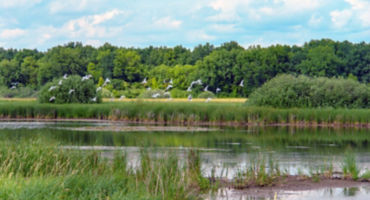The central role of food systems in biodiversity loss
The collection, production, distribution, and consumption of food has extensive impacts. According to the World Wildlife Foundation (WWF),1 the industrial systems used to feed humanity cause:
- 80% of deforestation loss and habitat degradation
- 70% of terrestrial biodiversity loss
- 50% of freshwater biodiversity loss
- 30% of greenhouse gas (GHG) emissions
Supporting more sustainable food systems and increasing the long-term resilience of food supply are an integral part of the Kunming-Montreal GBF but also various national or regional regulatory efforts such as the US Inflation Reduction Act, the 2023 US Farm Bill, and the EU’s Green Deal.
Potential areas for investment
Over time, we expect the combined momentum of these regulatory initiatives and growing consumer demand to translate into a wide range of investable approaches, but, at present, many of these opportunities are still nascent. However, we are starting to see attractive private-market options emerging for investors with the required specialist expertise. In addition, working with our global industry analysts, we have identified listed players with an innovative edge in the following four areas:





